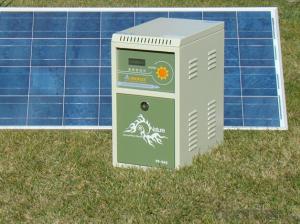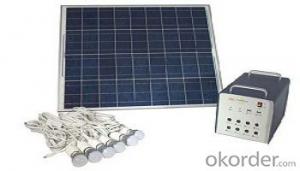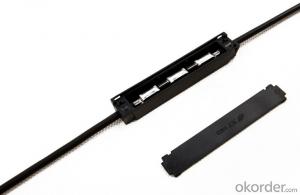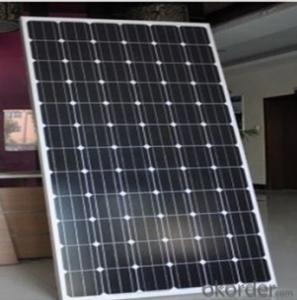Off grid Solar power system PR-SAS300A with battery tank 300W
- Loading Port:
- Tianjin
- Payment Terms:
- TT OR LC
- Min Order Qty:
- 10 pc
- Supply Capability:
- 10000 pc/month
OKorder Service Pledge
OKorder Financial Service
You Might Also Like
Item specifice
Specifications
1.Supply 2 work modes: to save electricity bill or to supply long time power backup.
2. Supply battery tank,high integrated.


Daily use reference
TV 70W x 4 hours
Lighting 30W x 6 hours
Fan 50W x 6 hours
Laptop 60W x 2 hours
Total loading power: 210W
Total power consumption per day: 880Wh (0.88kWh/day)
AC solar power system consists of solar batteries, solar controller, battery, inverter components.
Used to solve rural or remote areas without electricity, such as highland, island, pastoral, villas, border posts and other military and civilian life electricity.
Warranty
CNBM Solar panel provides one of the most comprehensive module warranties in the industry:
· 10 years for product defects in materials and workmanship
· First 12 years for 90% of warranted minimum power
· Remaining 25 years for 80% of warranted minimum power
Certification
CNBM Solar panel strictly carries out the ISO 9001 quality control methodology and has implemented check points at every step of the production process to ensure our product performance durability and safety. The stringent quality control process has been confirmed by numerous independent agencies and LDK Solar modules earned IEC, TUV and UL certifications.
· IEC:IEC 61215, IEC 61730 (1&2), conformity to CE
· UL 1703 2002/03/15 Ed:3 Rev:2004/06/30
· ULC/ORD-C1703-01 Second Edition 2001/01/01
· UL and Canadian Standard for Safety Flat-Plate
· ISO 9001: 2008 Quality Management Systems
· CEC Listed: Modules are eligible for California Rebates
· PV Cycle: Voluntary module take back and recycling program
· MCS Certificate
FAQ
l Where can I buy your products?
You could find our products from dealers or contact our sales team directly. We will provide you with detailed services.
l How to contact us?
Contact details can be found from website www.okorder.com to contact us. We look forward to providing you with professional services.
l What is the application field of your products?
They can be used in the small photovoltaic (PV) grid power generation systems of family units as well as the commercial photovoltaic system such as BIPV, BAPV and etc.
l What kinds of modules do your inventers support?
Our inventers support most of mainstream components and modules in the market. Should you require more details, please do not hesitate to contact our technical personnel.

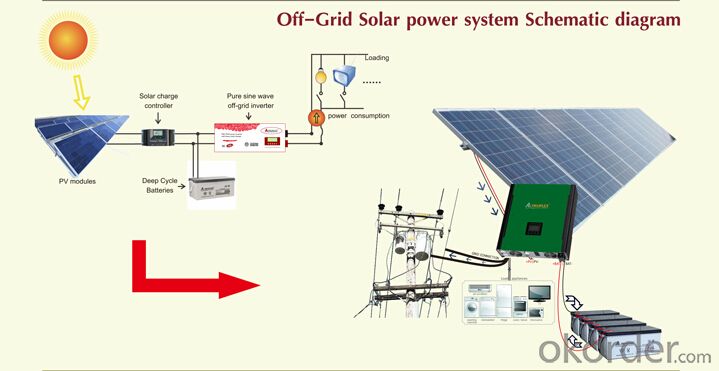

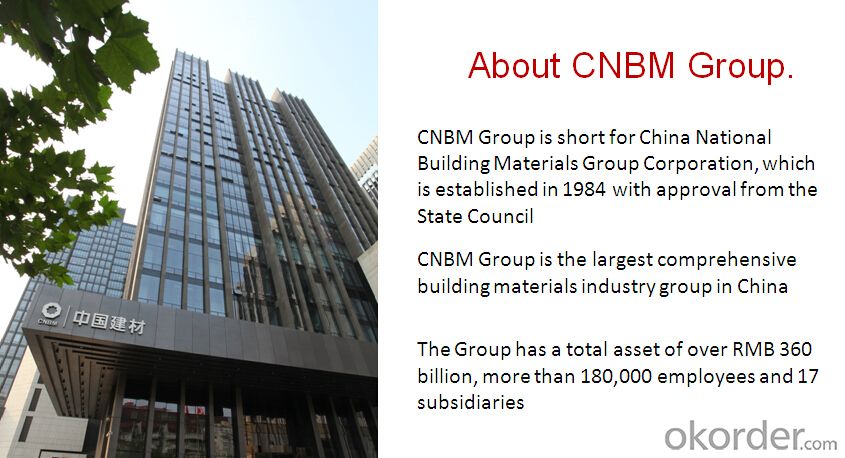

- Q:Are there any safety concerns with solar energy systems?
- Yes, there are a few safety concerns with solar energy systems. The major concern is the risk of electrical shock or fire due to improper installation or maintenance. Additionally, there is a potential hazard associated with the use of toxic materials, such as certain chemicals used in the manufacturing of solar panels. However, these risks can be minimized through proper installation by qualified professionals and regular inspections and maintenance.
- Q:Can solar energy systems be used for powering electric vehicle solar charging parking lots?
- Solar energy systems are certainly capable of powering electric vehicle solar charging parking lots. The combination of solar energy and electric vehicle charging is becoming increasingly popular as a sustainable solution for transportation and energy requirements. Sunlight can be captured and converted into electricity by installing solar panels on the parking lot structure or nearby rooftops. This clean energy can then be used to power the electric vehicle charging stations located within the parking lot. By utilizing solar power, these charging stations can operate independently of the grid, reducing the reliance on fossil fuels and minimizing greenhouse gas emissions. Furthermore, solar-powered charging lots have the advantage of generating electricity during the day when the demand for charging is typically higher. This merging of solar energy systems and electric vehicle charging infrastructure is an innovative and environmentally friendly approach to powering transportation.
- Q:Can solar energy systems be used to power boats or yachts?
- Indeed, boats or yachts can utilize solar energy systems for their power needs. By installing solar panels on the boat's roof or deck, sunlight can be captured and converted into electricity. This electrical energy can then be utilized to operate various systems onboard, including lighting, navigation equipment, communication devices, refrigeration, and even propulsion systems. The size and capacity of the solar energy system will be determined by the boat or yacht's specific power requirements and the available installation space. Opting for solar-powered boats and yachts offers numerous advantages, including decreased reliance on fossil fuels, lowered operational expenses, quieter operation, and reduced carbon emissions. However, it is important to acknowledge that solar energy alone may not suffice for larger vessels or extended periods of low sunlight. In such instances, a hybrid system that combines solar energy with alternative power sources, like wind or diesel generators, may be more suitable.
- Q:Can solar energy systems be used for powering disaster relief operations?
- Solar energy systems have demonstrated their worth in disaster relief efforts, serving as a highly valuable means of supplying electricity to affected areas. The deployment of solar panels and solar-powered generators to regions struck by natural calamities enables the provision of a dependable and sustainable source of power. A key advantage of solar energy systems lies in their ability to operate autonomously, independent of the power grid. This proves especially beneficial in disaster situations where the power infrastructure may be damaged or utterly destroyed. Solar panels are capable of generating electricity even in remote locations, thereby allowing relief workers to access power for vital operations, such as communication, medical services, lighting, and water purification. Furthermore, solar energy systems offer cost-effectiveness and environmental friendliness. Once installed, solar panels require minimal maintenance, with sunlight serving as an abundant and free energy source. Consequently, there is no need for costly fuel deliveries or the utilization of expensive diesel generators, which can pose logistical challenges and financial burdens in areas ravaged by disasters. Additionally, solar power produces no harmful emissions, thereby reducing the impact on the environment and enhancing air quality in already vulnerable regions. Moreover, solar energy systems can be easily scaled up to meet the escalating power requirements of disaster relief missions. Temporary solar arrays can be rapidly established, and if necessary, additional panels can be incorporated into the system to generate more electricity. This flexibility empowers relief organizations to adapt and respond to the changing needs of the affected population. Nevertheless, it is crucial to acknowledge that solar energy systems may have certain limitations. Their effectiveness is contingent upon the availability of sunlight, which can be influenced by weather conditions or geographical factors. In regions with limited sunlight or during periods of cloud cover, the system's output may be diminished. To surmount this challenge, energy storage solutions, such as batteries, can be integrated into the system to store surplus energy for use during periods of low sunlight. In conclusion, solar energy systems have consistently demonstrated their reliability, cost-effectiveness, and sustainability in powering disaster relief operations. They offer electricity independently of the grid, mitigate environmental impact, and can be readily expanded. By harnessing solar power, relief organizations can efficiently deliver essential services to those in need, thereby facilitating a swift recovery process in disaster-stricken areas.
- Q:Can a solar energy system be installed on a museum or cultural institution?
- Yes, a solar energy system can be installed on a museum or cultural institution. Solar panels can be mounted on the roof or in an open space surrounding the building to harness sunlight and convert it into electricity. This can help the institution reduce its reliance on conventional energy sources, lower its carbon footprint, and potentially save on electricity costs in the long run. Additionally, the installation of solar panels can also serve as an educational display, highlighting the institution's commitment to sustainability and renewable energy.
- Q:Can a solar energy system be installed on a public park or recreational area?
- Certainly, it is possible to install a solar energy system on a public park or recreational area. In truth, implementing solar panels in such locations can serve as an excellent means of promoting sustainability and renewable energy. Public parks and recreational areas frequently possess expansive, sunlit spaces, rendering them perfect sites for solar panel installation. These systems have the capability to produce clean, renewable energy and power numerous park facilities, including lighting, water fountains, and even charging stations for electric vehicles. Furthermore, the installation of solar panels in public parks can present a valuable educational opportunity for visitors to acquire knowledge about the advantages of solar energy and the significance of environmental preservation. Furthermore, these systems possess the potential to diminish the park's dependence on fossil fuels and diminish its carbon footprint, thus contributing to a more environmentally friendly and sustainable future.
- Q:Can solar energy systems be used for cooking?
- Yes, solar energy systems can be used for cooking. Solar cookers or solar ovens harness the energy from the sun to heat and cook food. They are a sustainable and eco-friendly alternative to conventional cooking methods as they utilize clean and renewable solar energy. Solar cookers can be used for various cooking tasks, such as boiling, baking, and even frying, making them a viable option for those seeking to reduce their carbon footprint and dependency on fossil fuels.
- Q:Can solar energy systems be used in powering construction sites or temporary structures?
- Yes, solar energy systems can definitely be used to power construction sites or temporary structures. Solar panels can be installed on rooftops or mounted on the ground to harness sunlight and convert it into electricity. This renewable energy source can provide a reliable and sustainable power supply for various construction activities, including lighting, equipment operation, and temporary office setups. Additionally, solar energy systems can be easily transported and set up at different locations, making them ideal for powering temporary structures, such as mobile offices or worker accommodation.
- Q:Can solar energy systems be used in powering concert halls or auditoriums?
- Yes, solar energy systems can be used to power concert halls or auditoriums. These systems can be installed on the rooftop or nearby areas to harness sunlight and generate electricity. The generated solar power can then be used to run the lighting, sound systems, and other electrical equipment required for concerts or performances. Additionally, solar energy systems can be integrated with battery storage solutions to ensure a continuous power supply, even during periods of low sunlight or at night.
- Q:Can solar energy systems be used in areas with heavy snowfall?
- Yes, solar energy systems can be used in areas with heavy snowfall. However, the performance and efficiency of these systems may be affected during the winter months due to reduced sunlight exposure and snow accumulation on the panels. Regular snow removal and tilt adjustments can help maximize their effectiveness in such areas.
1. Manufacturer Overview |
|
|---|---|
| Location | |
| Year Established | |
| Annual Output Value | |
| Main Markets | |
| Company Certifications | |
2. Manufacturer Certificates |
|
|---|---|
| a) Certification Name | |
| Range | |
| Reference | |
| Validity Period | |
3. Manufacturer Capability |
|
|---|---|
| a)Trade Capacity | |
| Nearest Port | |
| Export Percentage | |
| No.of Employees in Trade Department | |
| Language Spoken: | |
| b)Factory Information | |
| Factory Size: | |
| No. of Production Lines | |
| Contract Manufacturing | |
| Product Price Range | |
Send your message to us
Off grid Solar power system PR-SAS300A with battery tank 300W
- Loading Port:
- Tianjin
- Payment Terms:
- TT OR LC
- Min Order Qty:
- 10 pc
- Supply Capability:
- 10000 pc/month
OKorder Service Pledge
OKorder Financial Service
Similar products
New products
Hot products
Hot Searches
Related keywords
